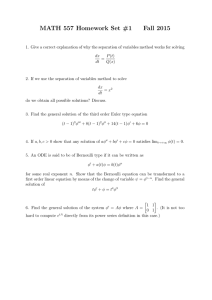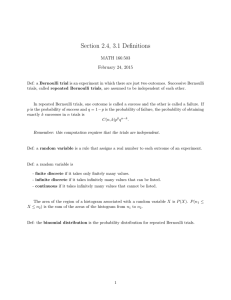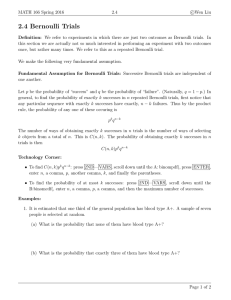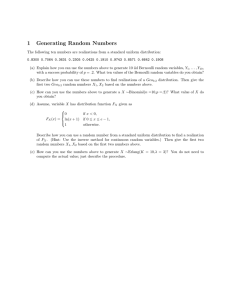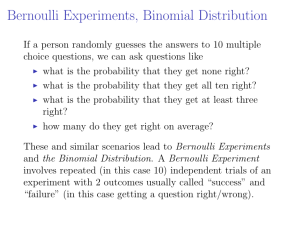LECTURE 16 Lecture outline • Readings: Section 5.1 • Random processes
advertisement
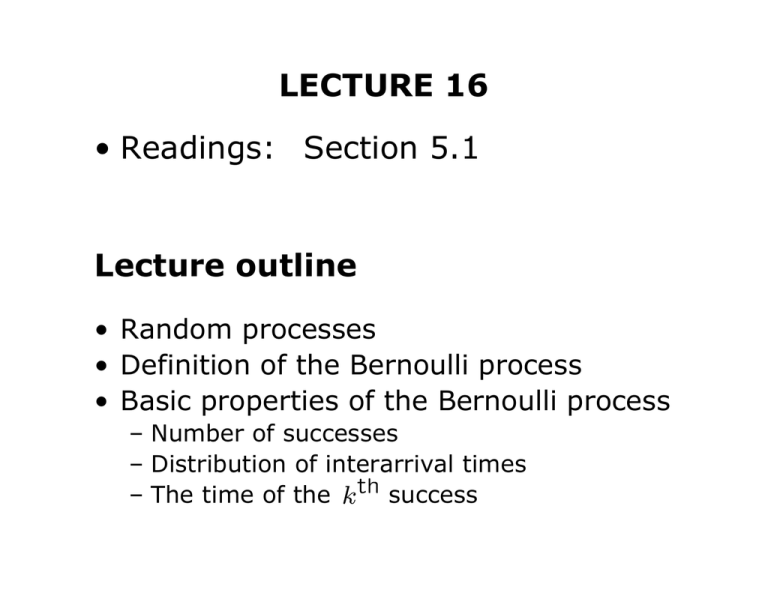
LECTURE 16 • Readings: Section 5.1 Lecture outline • Random processes • Definition of the Bernoulli process • Basic properties of the Bernoulli process – Number of successes – Distribution of interarrival times – The time of the success Random Processes: Motivation • Sequence of random variables: Examples: • Arrival example: Arrival of people to a bank. • Queuing example: Length of a line at a bank. • Gambler’s ruin: The probability of an outcome is a function of the probability of other outcomes (Markov Chains). • Engineering example: Signal corrupted with noise. The Bernoulli Process • A sequence of independent Bernoulli trials. • At each trial: – – T T T H T T T H H T T T T T H T H T T H $ $ $ $ $ $ • Examples: – Sequence of ups and downs of the Dow Jones. – Sequence of lottery wins/losses. – Arrivals (each second) to a bank. Number of successes • • Mean: • Variance: in time slots (Binomial) Interarrival Times • : number of trials until first success (inclusive). • • Memoryless property. • Mean: • Variance: (Geometric) Fresh Start and Memoryless Properties Fresh Start Given n, the future sequence process and is independent of the past. is a also a Bernoulli Memorylessness Suppose we observe the process for n times and no success occurred. Then the pmf of the remaining time for arrival is geometric. Time of the • : number of trials until • • It follows that: Arrival success (inclusive). : kth interarrival time Time of the • : number of trials until Arrival success (inclusive). • Mean: • Variance: • (Pascal)
